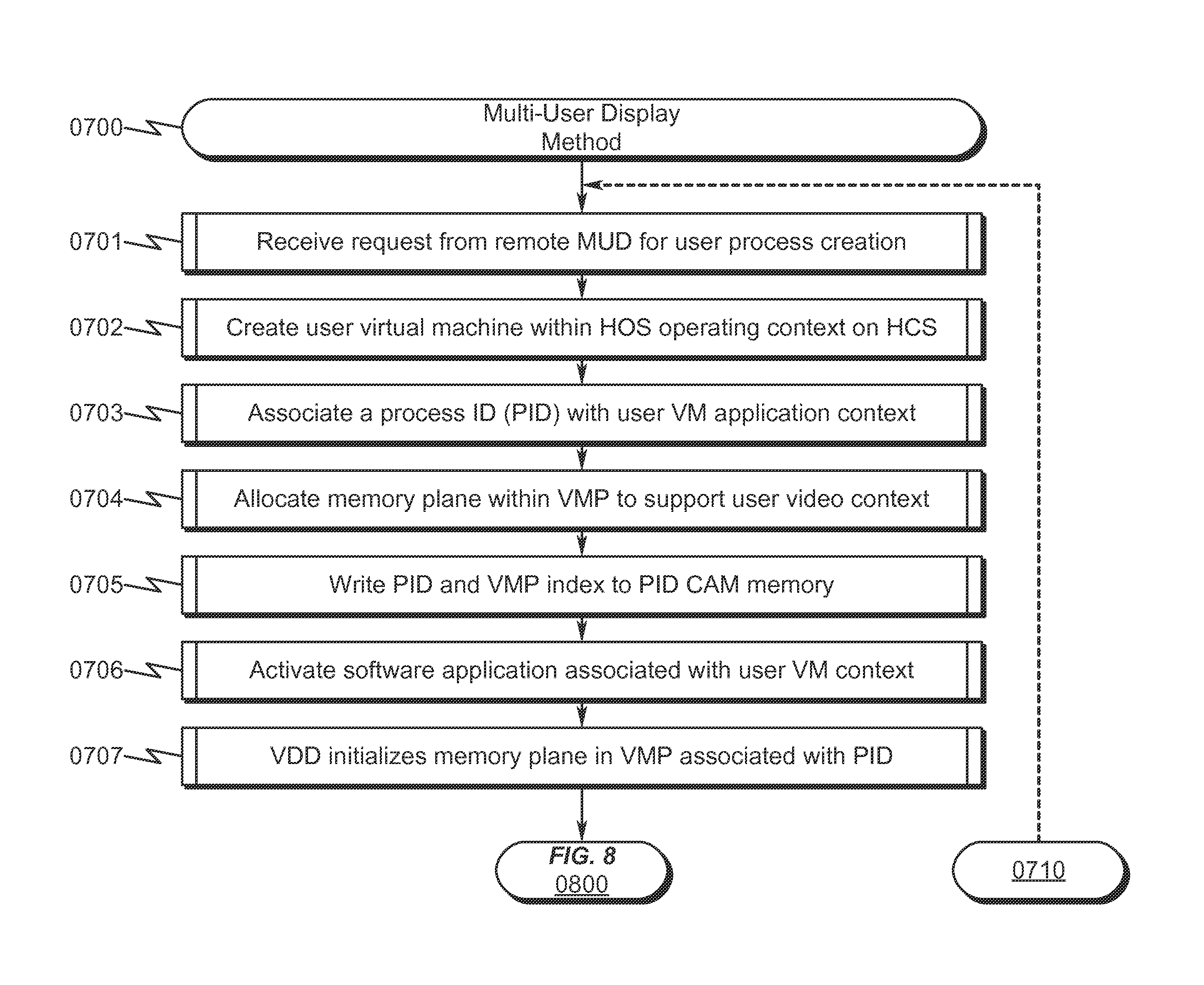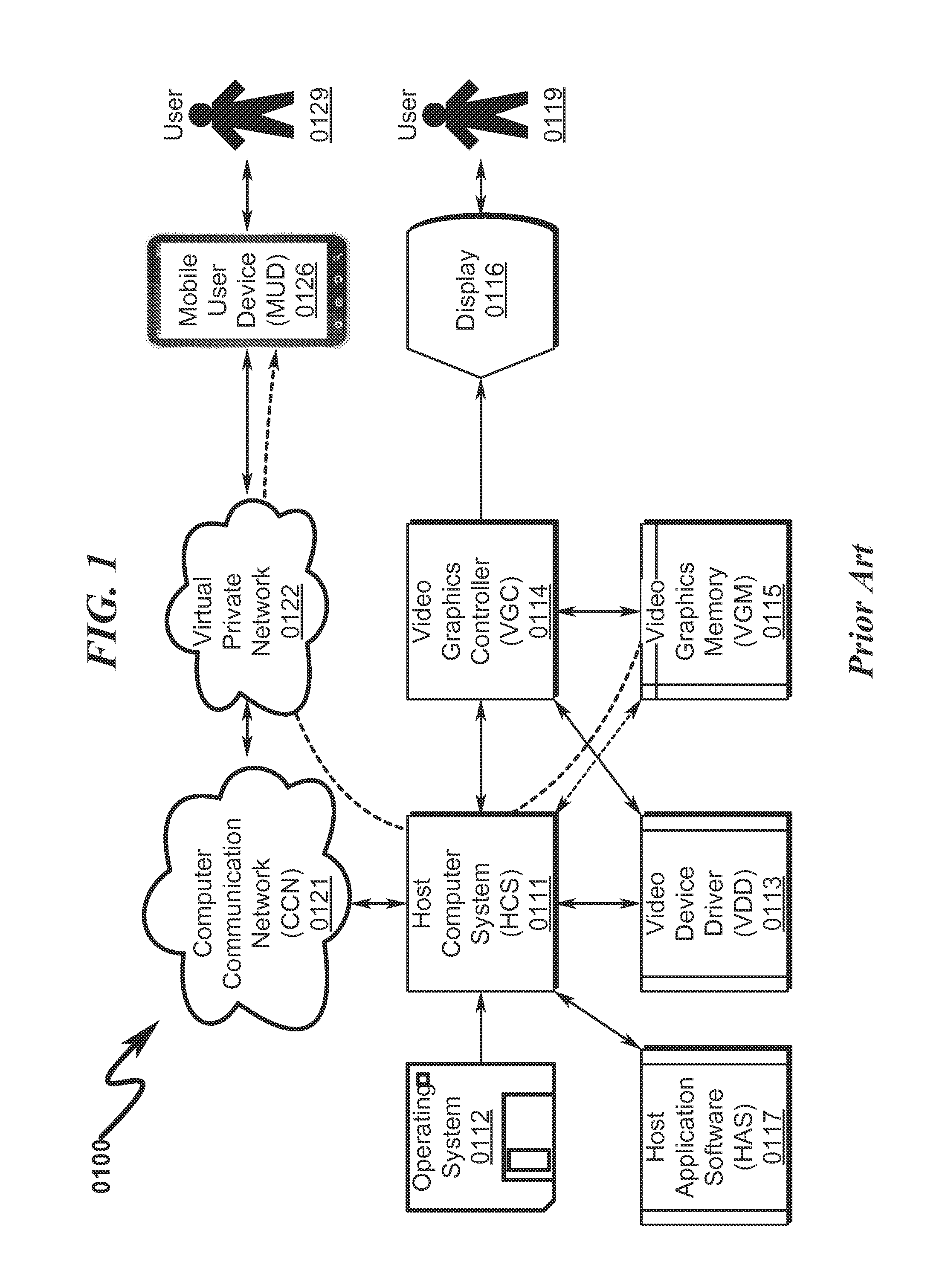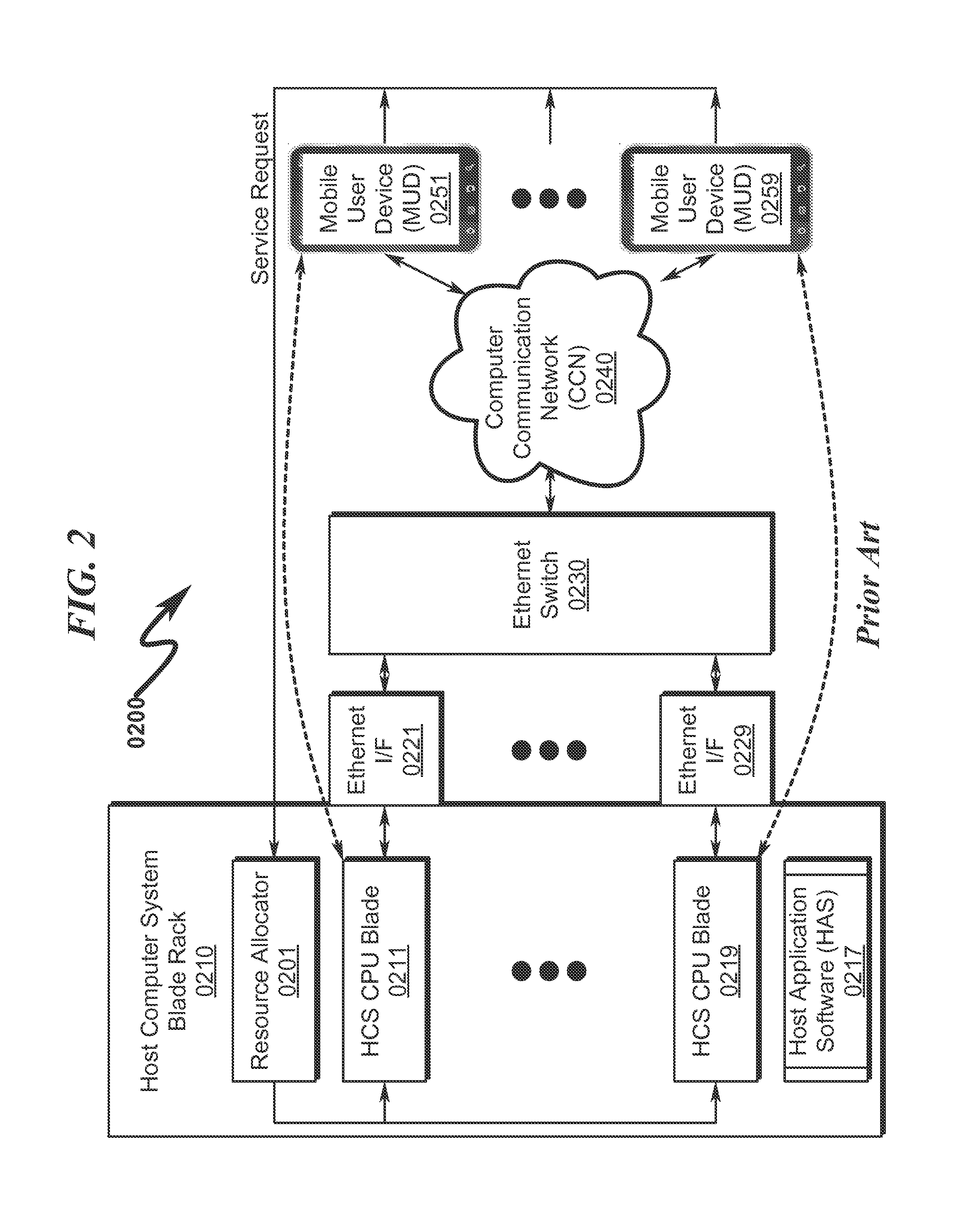The deployment of HAS (0117, 0217) to a large number of end-users using this traditional methodology can be problematic for several reasons including:A HCS CPU blade (0211, 0219) is required to support each individual MUD (0251, 0259).
This is a very expensive proposition given that the individual MUD (0251, 0259) may be a low value hardware component.The MUD may have insufficient resources to efficiently operate a VPN to support communication to the HCS CPU blade (0211, 0219).Idle processing capacity of unused HCS CPU blades (0211, 0219) is essentially wasted as there is no possibility of timesharing support among various individual MUD (0251, 0259) end-users.The MUD (0251, 0259) may have insufficient processing power to run the HAS directly.The MUD (0251, 0259) may have insufficient communication bandwidth to provide responsive access to the HAS (0117, 0217).The MUD (0251, 0259) may not have input hardware compatible with the HCS (0111) operating environment (missing keyboard, mouse, or other user input device).The MUD (0251, 0259) may not have display hardware compatible with the HCS (0111) operating environment (missing keyboard, mouse, or other user input device).
All of these issues may result in a poor user experience with the HCS / HAS combination and in many circumstances prevent the HAS from being capable of deployment in a MUD environment.
Both of these approaches suffer from significant performance limitations in that they require a large communication bandwidth overhead between the HCS and MUD to maintain a real-time view of the display screen that is simulated by the HCS for the purposes of providing a virtualized display for the HAS.
MUDs having limited processing power or limited communication bandwidth to the HCS suffer in these circumstances because these limitations result in poor application responsiveness and a resulting poor user experience.
Additionally, the large communication overhead associated with VPN methodologies (especially in situations where the video display experiences a high rate of change or user input such as keyboard or mouse input is common) results in higher communication costs for MUDs using this form of interface.
High frame rate updates by a typical VPN remote console simulator often result in very high communication link bandwidth utilization between the HCS and MUD and cannot be supported in situations where the communication link bandwidth is limited.
All of these drawbacks may be cost / performance prohibitive in situations where the end user has limited financial and hardware means.
This terminal simulation results in significant computational overhead both on the host computer system as well as the remote mobile device, as each is responsible for a software translation of graphics rendered information.
The resulting user experience can be unacceptable, especially in situations where the intervening computer communication network has low bandwidth or is susceptible to high transmission error probabilities.
The prior art as detailed above suffers from the following deficiencies:Prior art multi-user display systems and methods typically require a minimum CCN bandwidth to virtualize the HCS environment on the mobile device.Prior art multi-user display systems and methods typically lack responsiveness in situations where the CCN bandwidth is limited.Prior art multi-user display systems and methods typically consume considerable CCN bandwidth in virtualizing the HCS environment to the mobile device.Prior art multi-user display systems and methods typically lack responsiveness in situations where the MUD processing power is limited.Prior art multi-user display systems and methods typically require significant software application development to occur on the MUD to support the virtualized HCS environment.Prior art multi-user display systems and methods typically have difficulty in maintaining security for virtualized HCS environments supported by MUD hardware.Prior art multi-user display systems and methods require the use of a virtual private network (VPN) to maintain security between the HCS and MUD.Prior art multi-user display systems and methods typically have difficulty in porting the visual content of the HCS application to the MUD display environment.
While some of the prior art may teach some solutions to several of these problems, the core deficiencies in the prior art systems have not been addressed.
 Login to View More
Login to View More  Login to View More
Login to View More 


